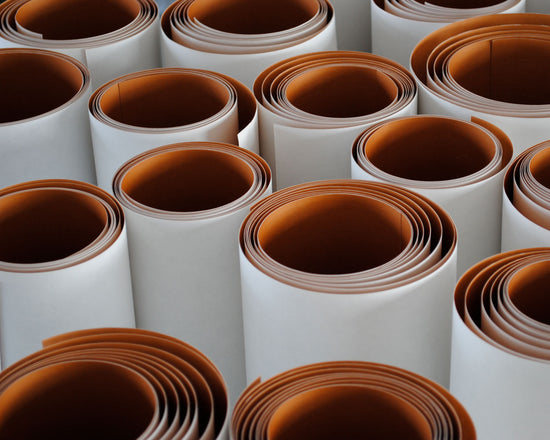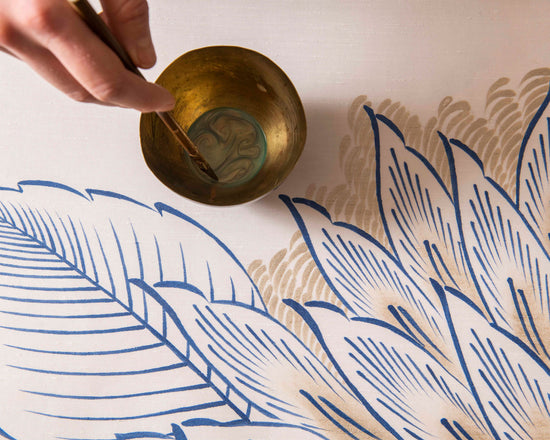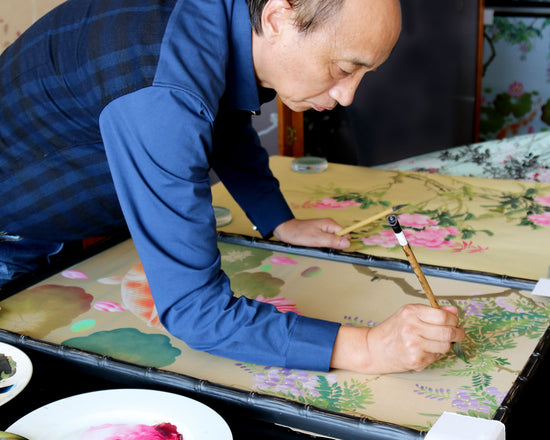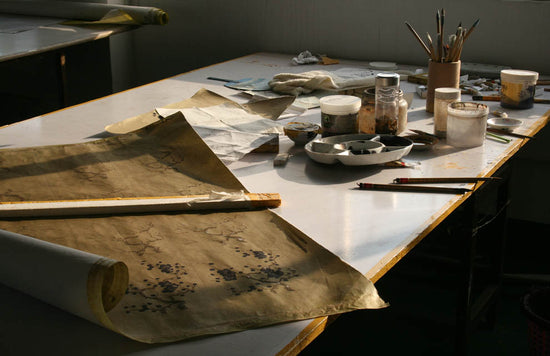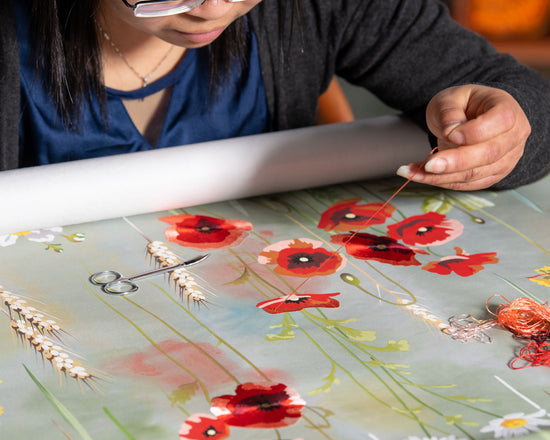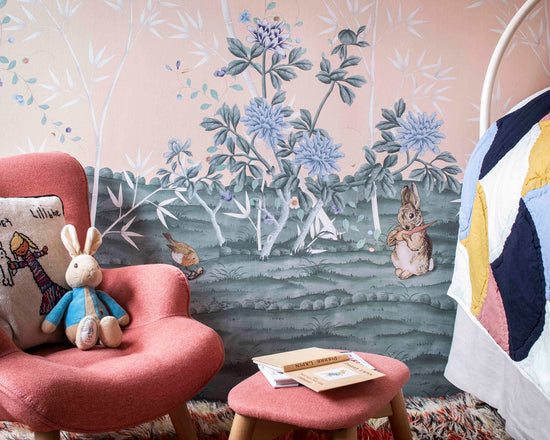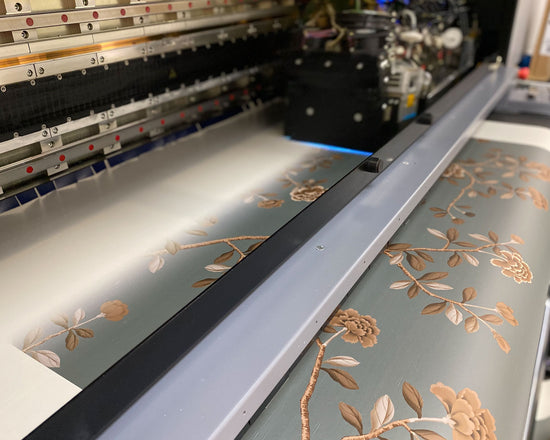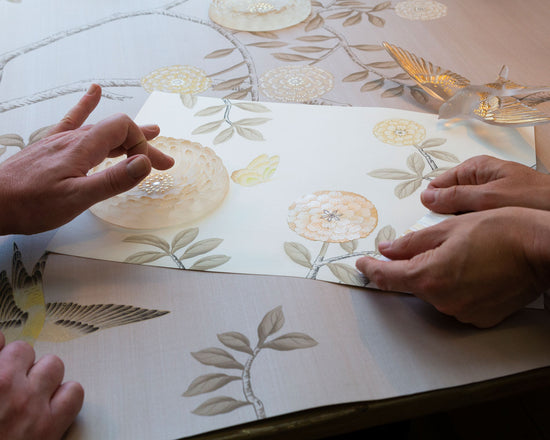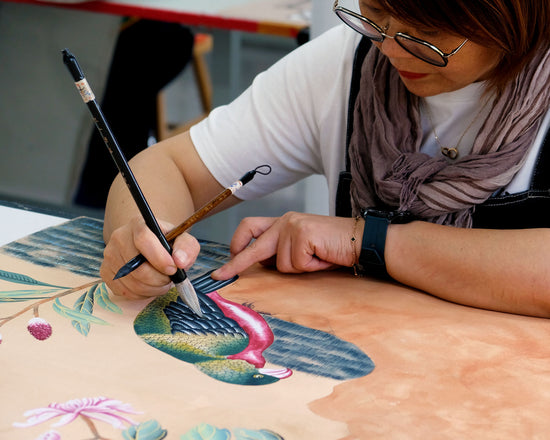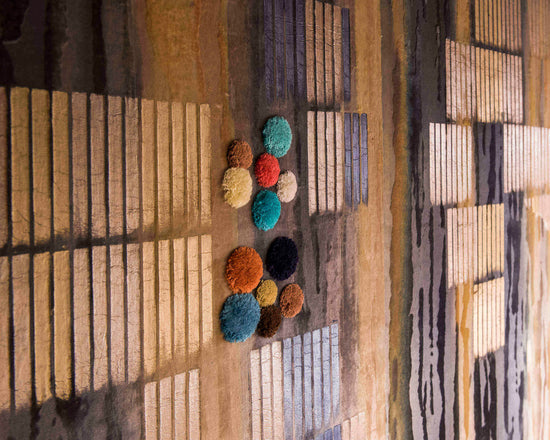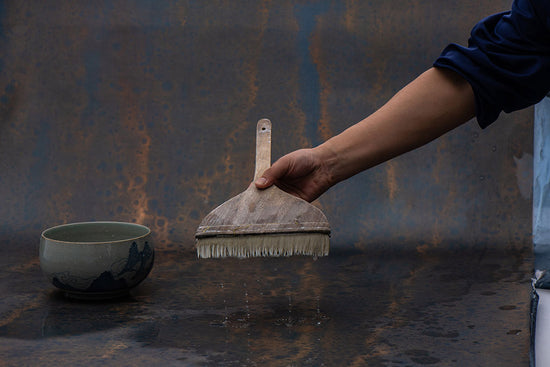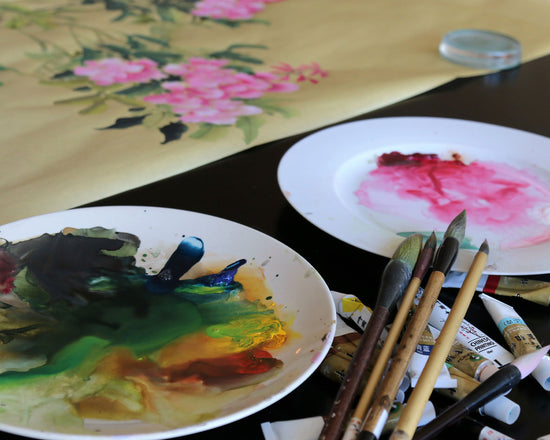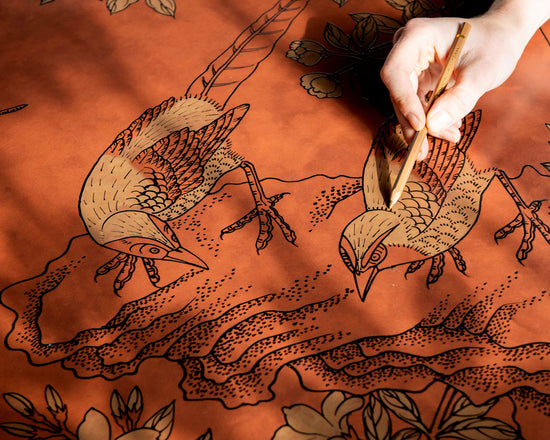Innovation
Even the most traditional methods, such as painting and embroidery, were once cutting-edge innovations and would have felt incredibly futuristic at their invention. The same goes for gilding, traditional Japanese goldwork, foiling and screen printing – techniques we still find incredibly exciting and are lucky enough to use every day.
But why stop there? Life’s more fun when you push the boundaries, and new technology, when used sensitively, can lead to astonishing results. Lately, we’ve been exploring 3D printing and puff paint screen printing, which have endless creative potential and can add incredible depth and texture to a design scheme.
When it comes to pioneering new techniques, the process is very much a collaborative effort between our London and Wuxi studios and is very hands-on. Our co-founder Tim or a senior member of the design team will visit our China studios in person and work side by side with our artists to develop a new design or methodology. This is always a thrill.
discover cutting edge products
